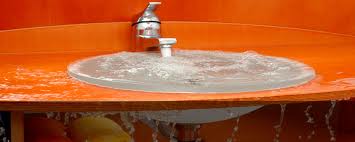Flood and Water Damage Restoration MN
Acting immediately after the emergency can save time and dollars in the restoration work. When it comes to one of your three most valuable assets, your home, your family, and your health do you want to take a chance with a company without experience?
Different removal methods and measures are used depending on the category of water. Contacting a certified professional water damage restoration specialist is often regarded as the safest way to restore water damaged property due to their training and extensive experience?
When your home suffers from storm damage, a flooded basement, sewage damage, immediate action is required to remove the water and minimize the damage and loss. The key in water removal and restoration is not to try and do it yourself. Water damage restoration is a serious undertaking and not to be taken lightly. If not done properly, by appropriately skilled and experienced, water removal restoration experts, you could at the least fail to fix the problem, and at worst cause greater damage than there was to begin with and suffer greater losses.
Most damage is divided into three main categories:
Water, under the IICRC’s S-500 Standard and Reference Guide for Professional Water Damage Restoration, has been broken off into three categories. These categories are based upon the level of contamination present, or presumed present, in the source water.
Category 1 is water from a clean or sanitary source. Previously known as clear water, this descriptor has since been removed to reduce confusion. These can include water from broken clean water supply lines; clean water from toilet tank or bowl; faucets; and bottled water. Although the source may be from a clean source, category 1 water can quickly degrade into category 2 or 3 depending upon such factors as time and contact with contaminants.
Category 2 is water with some level of contaminants that could cause discomfort or illness if ingested. Previously known as grey water, this descriptor has since been removed to avoid confusion. Sources for category 2 water may include washing machine overflow; toilet overflow with some urine, but no feces; dishwasher overflow. Category 2 water can quickly degrade into category 3 depending upon such factors as time and contact with contaminants.
Category 3 water is grossly unsanitary, and could cause severe illness or death if ingested. Previously known as black water, this descriptor has since been removed to avoid confusion. Sources for category 3 water include, but are not limited to, sewage; flooding from rivers or streams; water from beyond the toilet trap; water from the toilet bowl with feces; and standing water that has begun to support microbial growth.
Restoring Your Home From Flood or Water Damage
Whatever the cause and type of water damage, nowhere does the term “the right tool for the job” as much, meaning that a thorough and complete job requires the right equipment. Renting this equipment yourself could be prohibitively expensive, not to mention the steep learning curve in using it. Water damage restoration experts, by contrast, have all the right equipment for the job, and they know how to use it.
Whether the water damage you suffer is clean water from broken water lines, rain water or storm damage, or sewage damage, the best thing you can do for yourself as a homeowner is hire a professional Minnesota water damage repair and restoration service to handle it for you.




